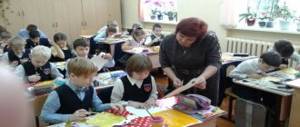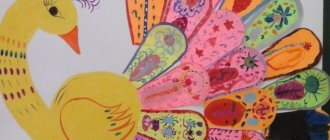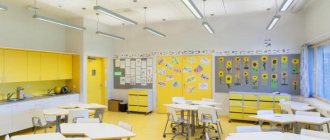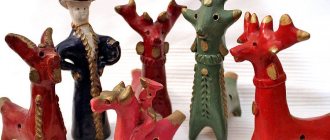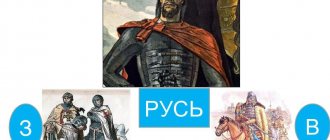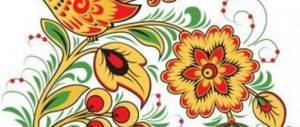Khokhloma: manufacturing technology
The process of beautiful wooden products occurs in several stages:
- Receiving “linen” - white, undyed products. The master shapes future spoons, tea cups, boxes and souvenirs from prepared wooden blocks, removing shavings from the wood with a lathe. Then the finished product is dried at a temperature of 22-28 ° C for 3-20 days.
- Vapor putty - unpainted items are coated several times after drying with special purified clay and left for 7-8 hours.
- Primer – drying oil 3-4 times (coated with layers of boiled linseed oil). Products are manually impregnated with drying oil, rubbing it in with special leather swabs. After the next impregnation, it is dried in a special cabinet at a temperature of 40-50 ° C. Then, after cooling, it is lightly sanded.
- “Tinning” - giving the product a silver or golden background. For silver color, aluminum powder is manually rubbed into the surface using leather sheepskin swabs. For gold, ground tin is applied. Then they are coated with special mixtures and fired several times in the oven until a sunny golden color is obtained. After which the product falls into the hands of master artists of decorative and applied arts.
Nachalochka
Hello, dear colleagues and caring parents!
Today I will share with you excerpts from Naina Velichko’s encyclopedia “Russian Painting”. The author of the book is an artist and she writes about Khokhloma not by hearsay, but as a folk craftsman and connoisseur of incredibly beautiful Russian painting.
These excerpts from the encyclopedia can be very useful to you when preparing for drawing lessons on the topic “Russian painting. Khokhloma." Perhaps you will learn something new about this unique painting and convey to your students true information about Khokhloma painting.
And caring parents will certainly pay attention to the great benefits of brush painting for the development of the child.
Who is not familiar with the bright, elegant art of Khokhloma! Spoons and bowls, salt shakers and bowls, pencil holders and chairs - there is sure to be something in every home. The art of Khokhloma is already 300 years old, and, as before, it remains the most famous, accessible and beloved folk craft of Russia.
Khokhloma painting was born in the mid-18th century in the peasant life of the Trans-Volga villages of Semino, Novopokrovskoye, Khryashi, Kuligino, and by the end of the 19th century it was already practiced in almost 150 surrounding villages. Historians say that the first settlers of the Trans-Volga forests were the “Utekletsy” - schismatics persecuted for the old faith. Among them were icon painters who used the technique of gilding and herbal writing in painting utensils.
The name of the craft is associated with the ancient trading village of Khokhloma, where painted dishes were brought from surrounding villages for sale. Local residents speak Volga - Khokhloma, emphasizing the first syllable.
Currently, Khokhloma products are produced at more than thirty enterprises in Russia, which speaks of the limitless possibilities of Khokhloma art. But genuine Khokhloma paintings in the village of Semino and “Khokhloma painting” in Semyonov.
Khokhloma is a masterly calligraphic painting that best develops the culture of movement and teaches art - this is how not only elements of brush painting are displayed, for example, the famous Khokhloma grass bushes, but also the best examples of Chinese and Arabic calligraphy.
If you are not an expert, then you have no idea how much Khokhloma curls can teach you. And these are not just pretentious words, but concrete, long-term experience. The ability to master the space of the painted surface is also projected onto interpersonal relationships, mastery of the situation, increases one’s own status and, most importantly, accustoms one to the beauty of movement. Sports and dancing also solve the same problem, but for some reason they are not available to everyone.
I am very sorry that the huge potential of folk brush paintings is not used in art lessons at school. Thanks to them, it would be possible to develop in children the ability to concentrate, to be patient but persistent in achieving results, and to feel their own rhythm. After all, those who find their rhythm will gain additional strength and stability in life.
At the Khokhloma Painting factory in the city of Semenov there hangs a poster with the words of D. Diderot: “A country in which they taught to draw, as they teach to read and write, would surpass all other countries.”
Naina Velichko is the author of the encyclopedia “Russian Painting”
If you liked the article, click on the social buttons and share with your friends.
Similar news on this topic:
- Russian letters (alphabet) in the Khokhloma style. Khokhloma painting technology.
- Khokhloma - background letter
